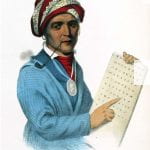
National Association for the Advancement of Colored People (NAACP) was founded in 1909, as an interracial effort to promote justice for people of color. Its papers offer an unparalleled resource for the study of the 20th-century Civil Rights Movement in the U.S. OSU Libraries holds over 1770 reels in 30 plus collections covering the years 1909-1972. The following is a listing of OSU Libraries’ microforms holdings: Part 1. Meetings of the Board of Directors, Records of Annual Conferences, Major Speeches, and Special Reports, 1909-1950. – Part 2. Personal Correspondence of Selected NAACP Officials, 1919-1939. – Part 3, series A-D. The Campaign for Educational Equality. – Part 4. The Voting Rights Campaign, 1916-1950. – Part 5. The Campaign Against Residential Segregation, 1914-1955. – Part 6. The Scottsboro Case, 1931-1950. – Part 7, series A & B. The Anti-lynching Campaign, 1912-1955. – Part 8, series A & B. Discrimination in the Criminal Justice System. – Part 9, series A-C. Discrimination in the U.S. Armed Forces, 1918-1955, General Office Files on Armed Forces’ Affairs, 1918-1955. – Part 10. Peonage, Labor, and the New Deal, 1913-1939. – Part 11, series A & B. Special Subject Files, 1912-1939. – Part 12, series A-D. Selected Branch Files, 1913-1939. – Part 13, series A-C. NAACP and Labor, 1940-1955. – Part 14. Race Relations in the International Arena, 1940-1955. – Part 15, series A & B. Segregation and Discrimination, Complaints and Responses, 1940-1955. – Part 16, series A & B. Board of Directors, Correspondence and Committee Materials. – Part 17. National Staff Files, 1940-1955. – Part 18, series A-C. Special Subjects, 1940-1955. – Part 19, series A-D. Youth File. – Part 20. White Resistance and Reprisals, 1956-1965. – Part 21. NAACP Relations with the Modern Civil Rights Movement. – Part 22. Legal Department Administrative files, 1956-1965. – Part 23, series A-C. Legal Department Case Files, 1960-1972. – Part24, series A-C. Special Subjects, 1956-1965. – Part 25, series A-D. Branch Department Files, 1941-1965. – Part 26, series A-D. Selected Branch Files, 1940-1955. – Part 27, series A-D. Selected Branch Files, 1956-1965. – Part 28, series A-B. Special Subject Files, 1966-1970. – Part29, series A-D, Branch Department. 1965-1972. – Part30. series A, General Office Files, 1966-1972. – Supplements to Part 1, 1951-1970. – Supplement to Part 4, 1956-1965. – Supplement to Part 5, 1956-1965. – Supplement to Part 13, 1956-1965. – Supplement to Part 16, 1966-1970. – Supplement to Part 17, 1965-1965, and. – Supplement to Part 23, series A-C, 1960-1972.









